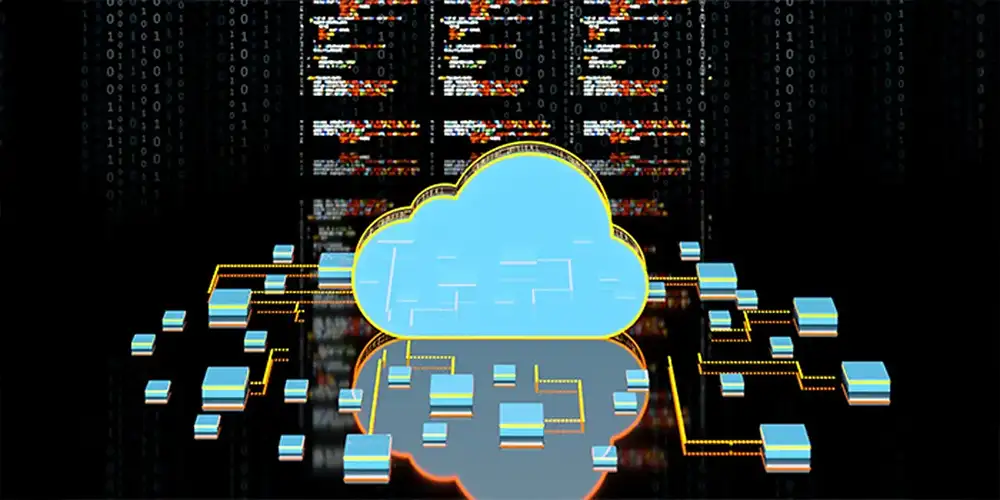Table of Content
TABLE OF CONTENTS

The cloud offers businesses a plethora of benefits, including improved agility, scalability, cost efficiency, and access to cutting-edge technologies. However, migrating complex enterprise processes to the cloud requires careful planning and a collaborative approach to address security, legal, and compliance concerns.
From understanding the critical implications of cloud security and compliance to leveraging established frameworks and securing endorsements from key divisions, we present a comprehensive guide to help you steer through the cloud migration maze confidently and excellently. By addressing these crucial elements, you can safeguard your organization's interests, maintain regulatory compliance, and harness the full potential of cloud computing for sustainable growth and success.
Understanding security, compliance, and legal implications
Migrating to the cloud necessitates addressing security, compliance, and legal concerns that may arise during the process. These elements are critical for safeguarding sensitive data, adhering to regulatory requirements, and protecting your organization's interests.
- Security: Ensure your chosen cloud service provider offers robust security measures, including data encryption, access controls, and threat detection capabilities.
- Compliance: Verify that the cloud environment meets industry-specific compliance standards, such as HIPAA, PCI DSS, or GDPR.
- Legal: Collaborate with your legal team to review service agreements, privacy policies, and data protection clauses.
Leveraging established frameworks
Frameworks such as the Cloud Security Alliance (CSA) Cloud Controls Matrix and the National Institute of Standards and Technology (NIST) Cybersecurity Framework provide invaluable guidance for organizations embarking on cloud migration initiatives. These frameworks offer comprehensive guidelines for assessing risks, implementing controls, and monitoring compliance throughout the cloud lifecycle.
By aligning with established frameworks, enterprises can streamline the cloud adoption process, minimize risks, and accelerate time-to-value. Furthermore, adherence to recognized standards enhances credibility and instills confidence among stakeholders, including customers, partners, and regulatory bodies.

Securing the cloud
Security lies at the heart of any successful cloud migration strategy. With cyber threats increasing at an alarming rate, safeguarding sensitive data and intellectual property is paramount. According to IBM reports, the global average cost of data breaches soared to USD 4.45 million in 2023, reflecting a significant 15% increase over the past three years.
To mitigate risks, enterprises must adopt a multi-layered approach to cloud security, encompassing encryption, identity and access management (IAM), and continuous monitoring. Implementing industry best practices such as the Center for Internet Security (CIS) Controls and the Cloud Security Alliance (CSA) Security Guidance can help fortify defenses and minimize the risk of data breaches.
Navigating legal considerations
Legal considerations play a pivotal role in the cloud migration journey, encompassing contractual agreements, data sovereignty, and liability issues. Enterprises must ensure that contractual agreements with cloud service providers (CSPs) adequately address data ownership, usage rights, and indemnification clauses.
Moreover, compliance with international data protection laws, such as the EU's General Data Protection Regulation (GDPR), requires meticulous attention to data residency and cross-border data transfers. Engaging legal counsel with cloud computing and data privacy expertise is essential for navigating these complex legal landscapes and mitigating legal risks.
Obtaining endorsements from key divisions
To secure endorsements from key stakeholders, such as security, compliance, and legal divisions, follow these steps:
- Create a detailed cloud migration plan that addresses their concerns and requirements.
- Organize workshops or training sessions to educate them on cloud technology, security measures, and compliance standards.
- Collaborate with these divisions throughout the migration process to address any issues and ensure alignment with organizational policies.
A report by Gartner reveals that by 2025, over 95% of new digital workloads will be deployed on cloud-native platforms, further underscoring the importance of engaging key stakeholders in cloud migration processes.
The role of a cloud migration partner
Engaging an experienced cloud migration partner can further streamline the process. A skilled partner brings invaluable expertise and resources to the table, streamlining the migration process and maximizing the benefits of cloud technology. Here's how a cloud migration partner can add value to your migration journey:
- Developing a tailored migration strategy – A one-size-fits-all approach rarely yields optimal results in cloud migration. A seasoned migration partner understands the unique needs and challenges of your organization, enabling them to develop a tailored migration strategy that aligns with your business objectives. Whether it's a lift-and-shift approach or a phased migration strategy, a partner can guide you through the process, ensuring minimal disruption to your operations.
- Implementing security and compliance best practices – Security and compliance are non-negotiable aspects of cloud migration. A reputable migration partner possesses deep knowledge of industry regulations and best practices, helping you navigate the complex landscape of security and compliance requirements. From implementing robust encryption protocols to ensuring data residency compliance, a partner can fortify your cloud environment against emerging threats and regulatory scrutiny.
- Identifying opportunities to optimize costs and performance – Cloud migration presents opportunities to optimize costs and enhance performance. A knowledgeable migration partner can conduct thorough assessments of your existing infrastructure, identifying areas for optimization and cost savings. A partner can help you achieve maximum efficiency and ROI in your cloud environment by leveraging cloud-native services, rightsizing resources, and implementing cost management strategies.
- Providing ongoing support and monitoring post-migration – The journey to the cloud doesn't end with migration; it's an ongoing process of optimization and refinement. A proactive migration partner provides continuous support and monitoring post-migration, ensuring that your cloud environment remains secure, compliant, and performant. Whether it's troubleshooting issues, implementing updates, or optimizing configurations, a partner stands by your side, empowering you to harness the full potential of cloud technology.
Conclusion
Navigating corporate cloud migration processes involves understanding the complexities of security, compliance, and legal considerations. By leveraging established frameworks and fostering collaboration among key stakeholders, organizations can ensure a seamless transition to the cloud. Engaging a cloud migration partner can further optimize the process, allowing businesses to focus on their core operations while harnessing the full potential of cloud technology.
Related Webinar
Data Management Team
The experts behind your data success, our data management team is the driving force behind precision, accuracy, and data-driven insights to drive your business forward.
-2.jpg?width=240&height=83&name=Menu-Banner%20(5)-2.jpg)
.jpg?width=240&height=83&name=Menu-Banner%20(8).jpg)

